The Biggest Flooding Stories You’re Not Hearing About
As some places swelter under extreme heatwaves, other parts of the world are feeling the effects of global warming through floods.

As some places swelter under extreme heatwaves, other parts of the world are feeling the effects of global warming through floods.
Here’s how floods are affecting people around the world.
1. Flood damages infrastructure
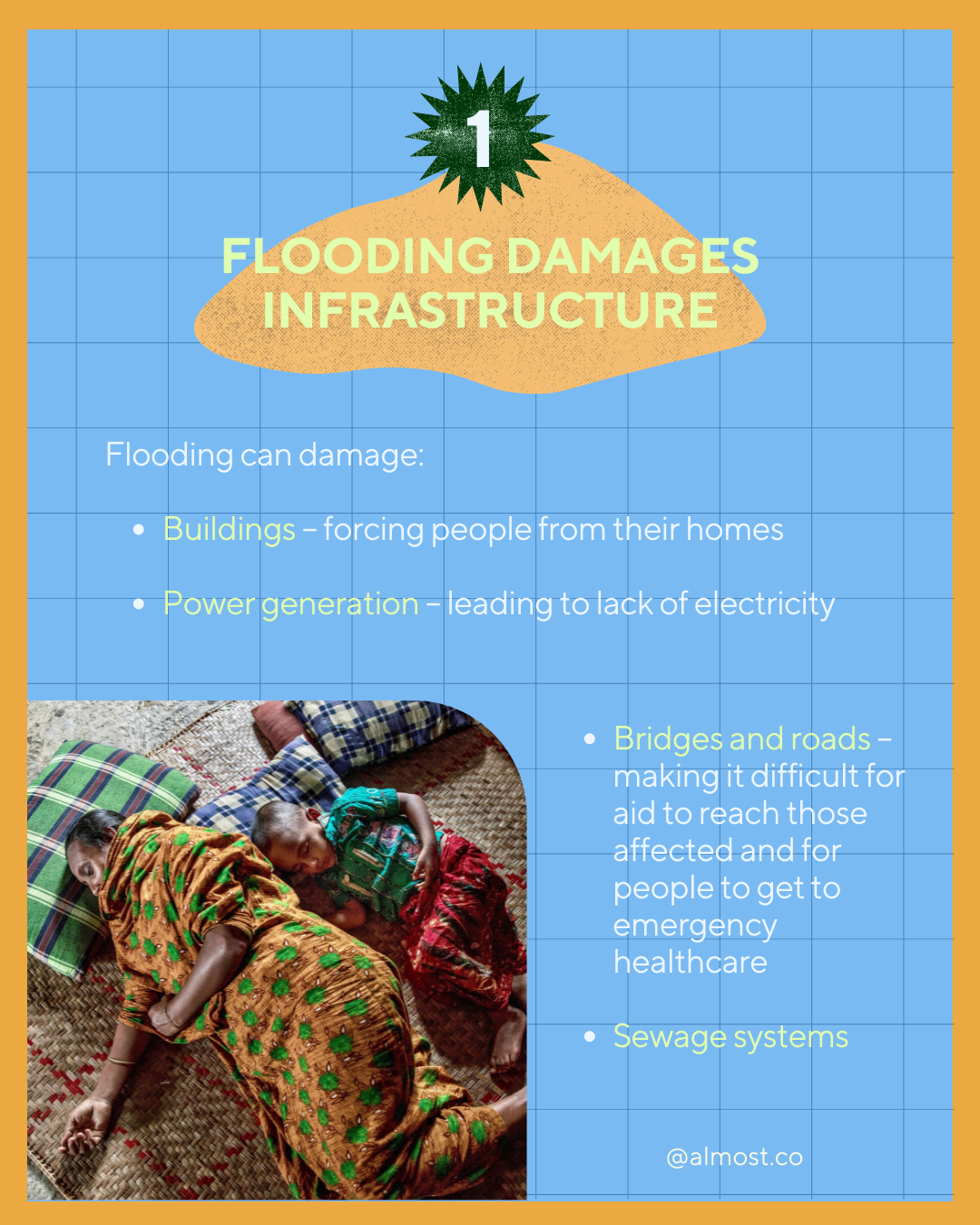
Flooding can damage:
- Buildings – forcing people from their homes
- Power generation – leading to lack of electricity
- Bridges and roads – making it difficult for aid to reach those affected and for people to get to emergency healthcare
- Sewage systems
Australia’s rain bomb

Eastern Australia experienced three major floods in the span of just three months between February to April 2022.
After being hit by a “rain bomb” in February, several areas in Queensland recorded up to 1.5 meters of rainfall in just one week – the normal amount over a year.
The Insurance Council of Australia estimated the March flood caused about $4.8 billion Australian dollars in damage.
2. Flooding affects people’s ability to access clean and safe water
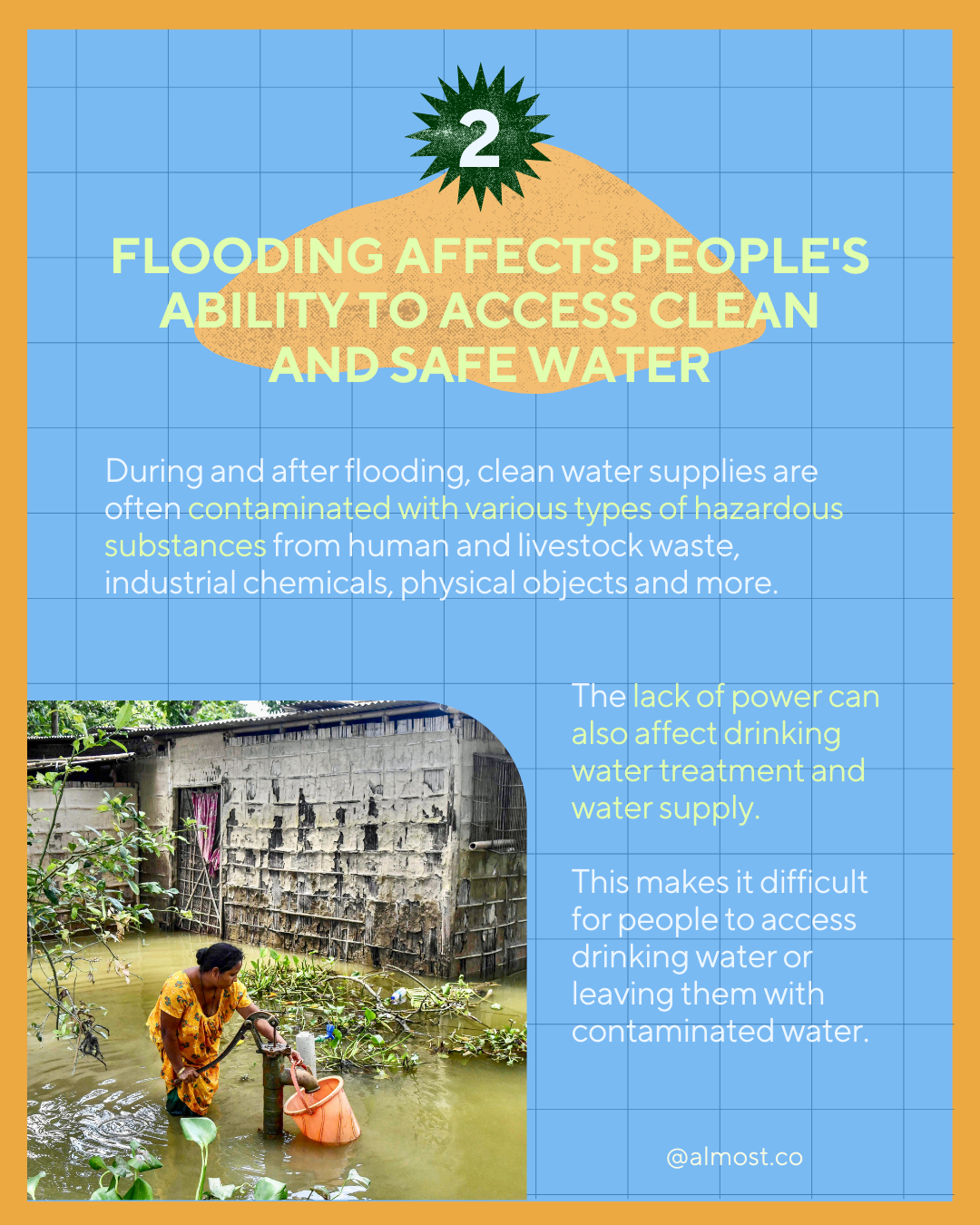
During and after flooding, clean water supplies are often contaminated with various types of hazardous substances from human and livestock waste, industrial chemicals, physical objects and more.
The lack of power can also affect drinking water treatment and water supply.
This makes it difficult for people to access drinking water or leaving them with contaminated water.
India & Bangladesh

Northeastern India and Bangladesh were hit by catastrophic flooding twice in less than a month in May and June.
4 million people, including 1.5 million children were stranded and in urgent need of help in northeastern Bangladesh from floods in June 2022.
90% of healthcare facilities in Bangladesh’s Sylhet, were inundated.
3. Flooding increases the spread of water-borne diseases
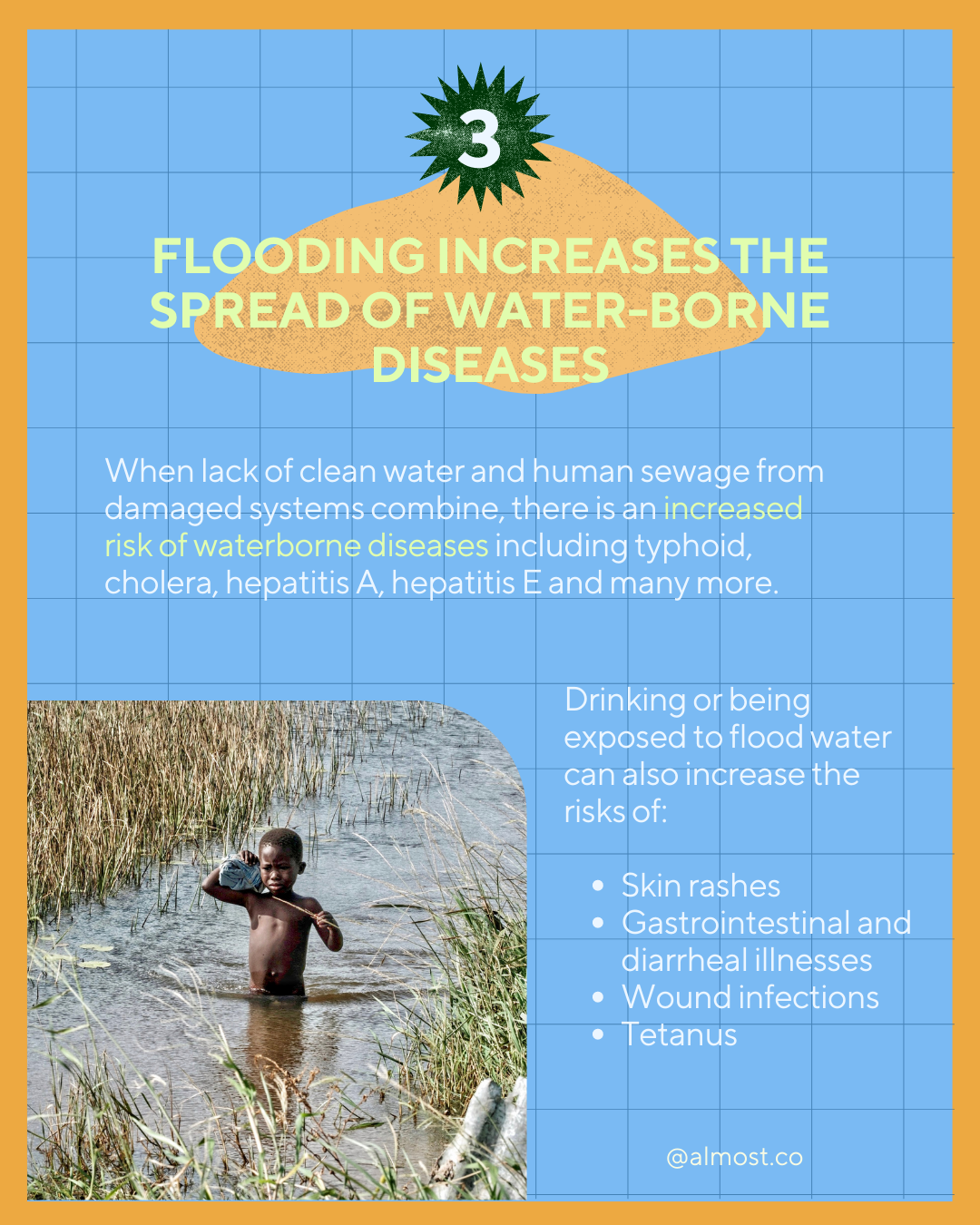
When lack of clean water and human sewage from damaged systems combine, there is an increased risk of waterborne diseases including typhoid, cholera, hepatitis A, hepatitis E and many more.
Drinking or being exposed to flood water can also increase the risks of:
- Skin rashes
- Gastrointestinal and diarrheal illnesses
- Wound infections
- Tetanus
Southern Africa

In January 2022, tropical Storm Ana lashed countries in southern Africa including Madagascar, Malawi, Mozambique and Zimbabwe.
350,000 people were affected across Madagascar, Mozambique and Madagascar.
At least 142 people were killed, and some of the infrastructure that had been rebuilt after Cyclone Idai in 2019 was destroyed again.
4. Flooding threatens food security
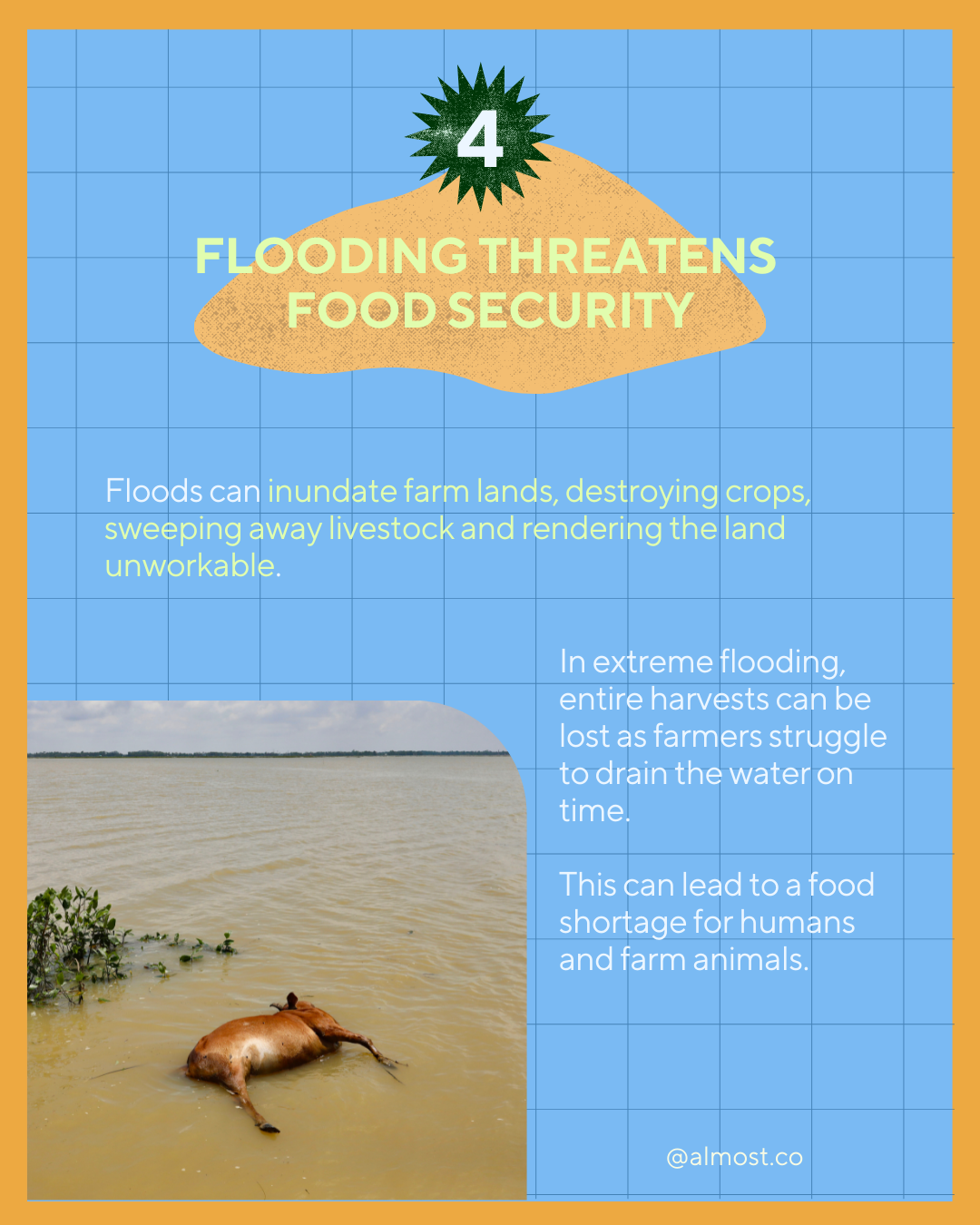
Floods can inundate farm lands, destroying crops, sweeping away livestock and rendering the land unworkable.
In extreme flooding, entire harvests can be lost as farmers struggle to drain the water on time.
This can lead to a food shortage for humans and farm animals.
China
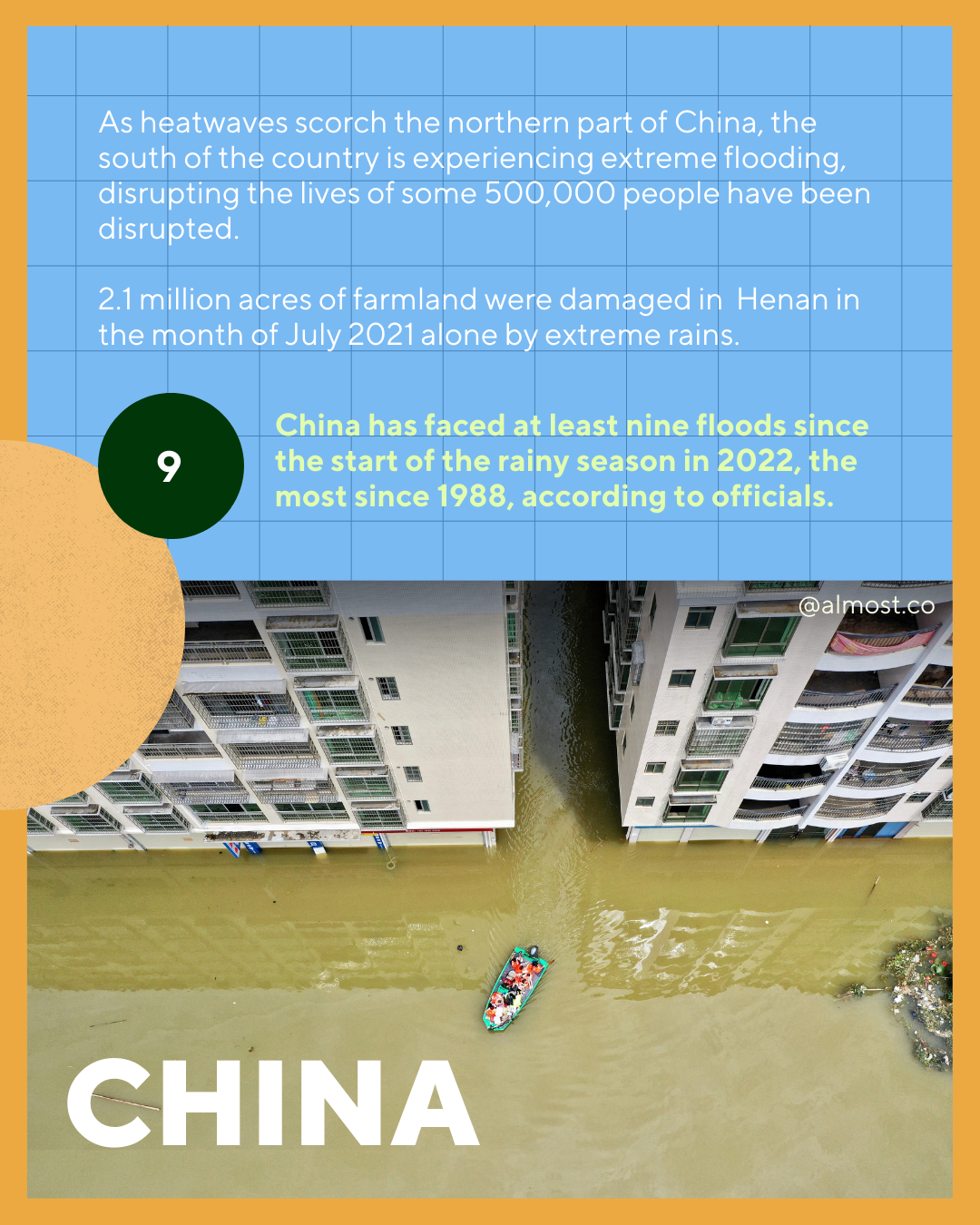
As heatwaves scorch the northern part of China, the south of the country is experiencing extreme flooding, disrupting the lives of some 500,000 people have been disrupted.
2.1 million acres of farmland were damaged in Henan in the month of July 2021 alone by extreme rains.
China has faced at least nine floods since the start of the rainy season in 2022, the most since 1988, according to officials.





